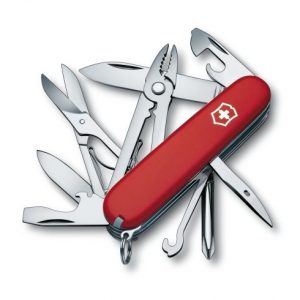How A Swiss Army Knife Could Radically Change Your Digital Transformation Process

Digital transformation is a top priority at many enterprises as they attempt to convert more workflows to fully electronic processes. In the case of document handling and processing, many companies have implemented digital imaging solutions to convert their paper documents (mail, forms, archives, etc.) into digital documents. But that’s just one step on the path toward digital transformation.
This isn’t just about having electronic data or files; a true transformation involves fundamental changes in how that data is managed or utilized after the scanning process. That’s where imaging and document management software plays an increasingly important role in digital transformation initiatives.
At OPEX, our scanners have been greatly enhanced by the expansion of features and functions found in our software package. CertainScan maps user-defined metadata from any OCR, MICR, or bar code on a scanned page. This allows for highly granular indexing of digital files.
That only represents the base software options that OPEX offers on their Falcon scanners.
To enable a true digital transformation, one that helps companies take scanned documents and easily integrate them with other sources of digital data to create new workflows or enhance existing ones, you need a software suite that is both configurable and has full functionality. Using OPEX edit, operators can edit batches and metadata during the scanning process, including inserting, deleting, and moving images.
OPEX Transform, for example, is a utility that can convert standard scanner output files into XML and ASCII file formats. The software can convert tiff and jpeg images into multipage tiffs, PDFs, and PDF-A files.
This ability to quickly edit, index, virtually batch, and convert images into different file types, unlocks new possibilities when it comes to turning scanned documents into data that can be leveraged across operations and applications. A single scanned piece of paper can be converted into multiple streams of outputs, which eliminates many manual distribution tasks while also making it easier for other applications and staff members to access the data within the documents.
The first area where these benefits are readily apparent is in the document management process itself. Even companies that use high-speed scanners struggle with time-consuming manual prep processes and distribution processes.
Documents have to be sorted and organised before scanning, and then those batches are scanned as separate jobs. The documents are then physically resorted for storage in some cases. With configurable imaging software, all of those processes can be handled virtually, and in many cases, automatically.
Documents can be scanned as they arrive and then indexed and batched during the scan process. The digital document can then be distributed to multiple locations simultaneously based any rules the user establishes. More importantly, the documents can be automatically converted to other file types for use by additional applications – including remittance, enterprise resource planning, accounting, electronic health record, and other systems.
For enterprises of any size, the elimination of those manual preparation steps and distribution/archiving activities can represent a significant time and cost savings. It also makes the entire process more accurate and beneficial.
From there, the digital documents can be integrated into other workflows. The content can be used in data mining or analysis activities in ways that weren’t possible before (or at least not possible without additional software tools or manual workarounds).
OPEX has also designed software to digitalize the process of managing the scanners themselves. With OPEX Insight, supervisors can monitor the performance metrics and machine statistics on all devices, and allow users to modify job and operator settings from a single location. Because the software tools are fully configurable, they serve as a virtual Swiss Army knife when it comes to enabling these new digital operations.
For companies with an eye on digital transformation, having the right imaging software in place can not only help improve the flexibility of their scanning operations but also make it easier to create more innovative digital workflows across the organization.
For further information, contact Byron Knowles, OPEX Business Development Manager – APAC. Email: bknowles@opex.com Tel: 0 484 596 470 (m) Web: www.opex.com/contact
